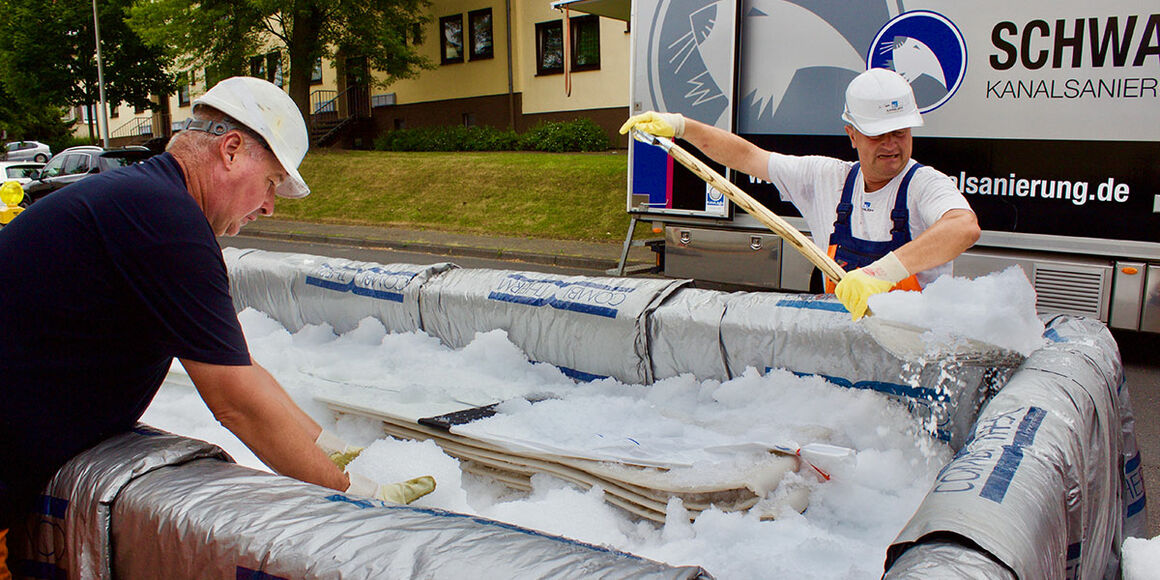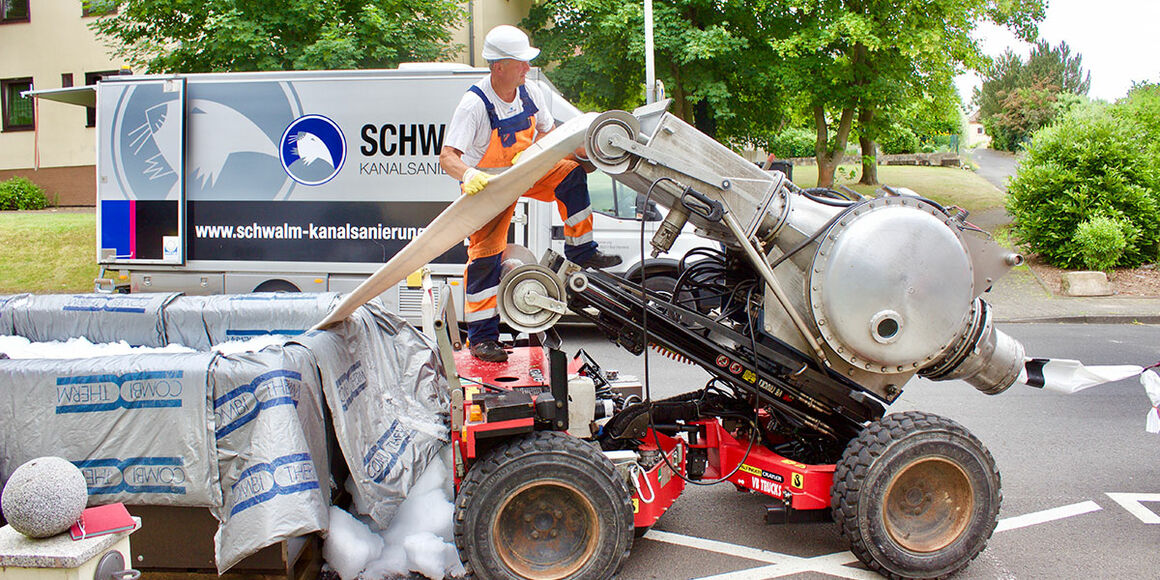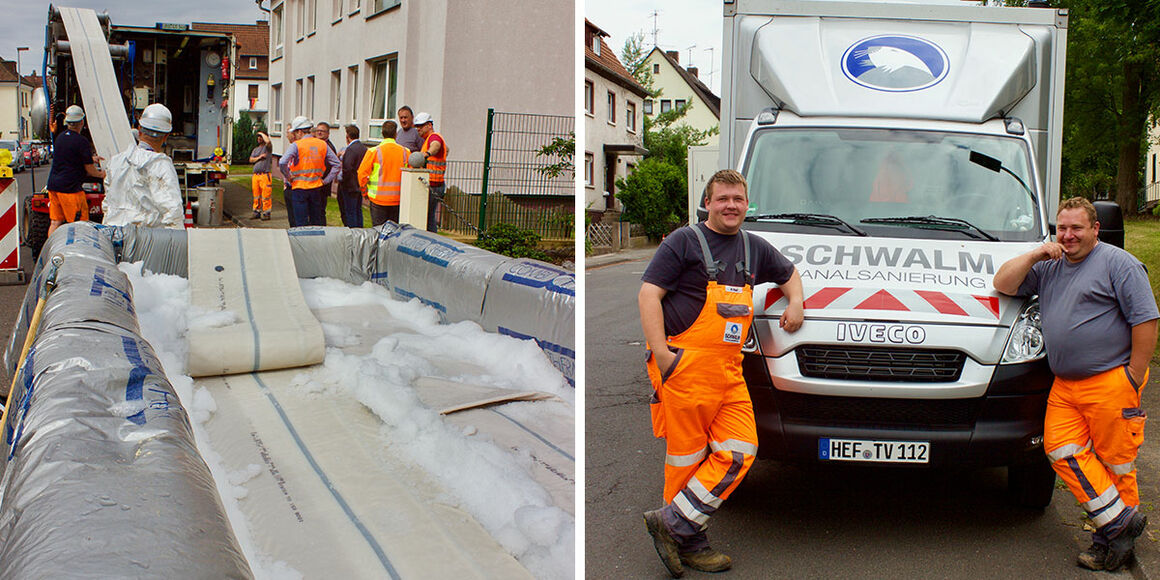When the renovation of the public sewer system is on the agenda in a town or city, there are various points that are important for the Client with respect to the implementation. 1. As innovative and high-quality as possible, 2. causing as little disruption for residents as possible 3. as cost-oriented as possible. And this is what happened as the sanitation utilities operator in Bebra, as it chose the trenchless sewer rehabilitation some time ago in order to renovate the entire 12.7 kilometers of the town’s 70-year old and defective public sewer system. “The primary thing that makes this renovation technology so optimal is the fact that the renovation work is carried out by robots and implementing a sewage-pipe process underground, which makes it economical, allows the work to be completed quickly with the minimum of inconvenience for residents,” explain Udo Rantke, qualified Engineer, sanitation utilities operator in Bebra, and Qualified Engineer Stefan Gier from the engineering office Rother & Partner. “And it involves a lot: The entire project entails 1,190 supports, 809 hat profiles, 370 hat liners, 114 short liners and 11 long liners implemented from 2016 to 2018 at an overall cost of €1.62 million.
The linear installation work is conducted by the experts from the company Aarsleff Rohrsanierung GmbH from Ilmenau, the necessary preliminary and follow-up work is carried out by the specialized partner Schwalm Kanalsanierung from Bad Hersfeld.
Hardly a day goes by where Schwalm Kanalsanierung's experienced and highly qualified specialists for pipeline, sewer and industrial services aren't being deployed. "But once again, this large-scale job order in Bebra was once again exciting from day one," reports Michael Draband, Construction Manager at Schwalm Kanalsanierung along with Matthias Reimann, the Senior Site Engineer at Aarsleff. “On behalf of the sanitation utilities provider in Bebra, in 2016 and 2017 we renovated the partial sections of the overall 150 kilometers long sewer system using the pipe-lining process," explains Reimann: "This means that a hose impregnated with synthetic resin is pushed into the line with air pressure and expanded, such that it is lying close and tight the entire length of the pipeline wall. A new "pipeline in a pipeline" with a useful life of at least 50 years is thus created. But before this process can be implemented, however, the current actual condition of the sewer must be determined by means of the TV inspection and it must be cleared of all root ingresses, debris, leaks, cracks, as well as deposits during the pre-milling work carried out by Schwalm Kanalsanierung.
The work in the third construction section in Bebra, which measures 4.2 kilometers began at the end of April 2018 with the pre-milling work carried out by Schwalm Kanalsanierung. This entails two Schwalm sewer-renovation vehicles on-site every day in order to create the pre-conditions to allow for the installation of the liner.
When the sewer pipe has been prepared up to that point, the Aarsleff liners are then delivered just-in-time, wrapped in dry ice in order to prevent the inner liner that is soaked in artificial resin from curing too early. By means of compressed air, the liner is then blown into the sewer pipe and is turned inside out in the process. The connections are then opened once the curing time has been completed. The Schwalm Talpa FSR 2060 robot that works through the pipes remotely and ensures the best view thanks to a high-performance camera will be used for this purpose. A renewed flushing of the channel is undertaken. This is then followed by the primary work phase that entails connecting the house connections to the renovated sewer. A suitable HutlinerPacker® (hat liner packer) featuring a rubber hat is chosen in the renovation vehicle for this purpose based on the image data. This is now maneuvered into the sewer with the help of the robot and positioned underneath the connecting piece. Afterwards, the operator pumps up the HutlinerPacker® with compressed air, then presses the hat seal (made from needle felt) on the lateral liner connection. It is then removed from the sewer. “We have already implemented this process hundreds of times here in Bebra with subsequent quality controls and documentation,” explained the experts at Schwalm Kanalsanierung, “and they will continue to do so up until the end of the year 2018, until such time as all hat profiles, as well as hat liners have been installed. But we are already very satisfied with the progress we have made up until now on site. We are absolutely within schedule. And this is something that not only we are happy about, this means that our Client can keep their promises, and the respective residents have and will only have to live with minor inconveniences for a very short amount of time”.


